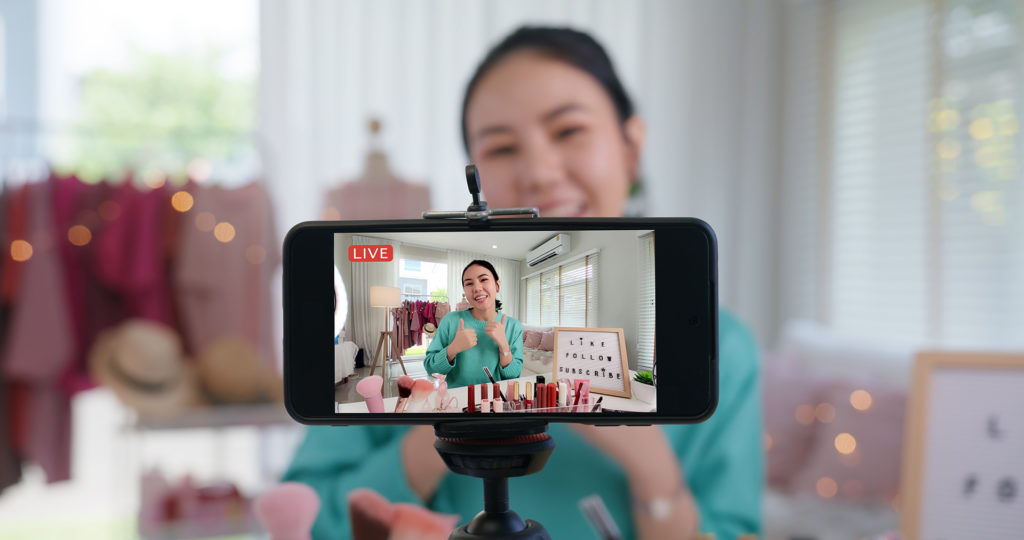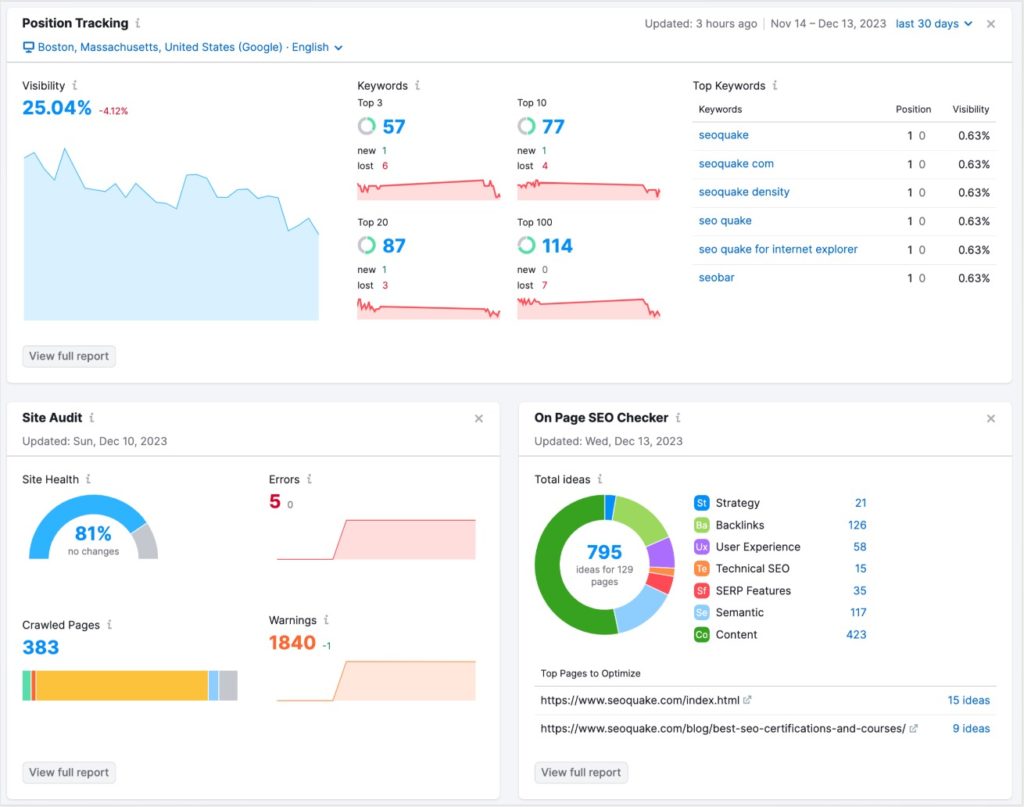In the age of smartphones and endless scrolling, social media is king. But if you’re running a business, you know there’s more to success than just fantastic posts.
That’s where search engine optimization (SEO) comes in. Here’s the deal: SEO helps people find your website when they search online. Think of it like putting up a giant sign with keywords that describe your business. Social media, however, is excellent for building your brand, getting noticed, and sharing content. It also lets you directly connect with potential customers on their regular platforms.
Now, imagine what happens when you combine these two forces. That’s a social SEO strategy – a powerful tool that can skyrocket your search ranking, get you noticed online, and turn those viewers into loyal fans.
As a business owner, I’ve learned how important it is to understand the connection between SEO and social media marketing. These two big tools help me showcase my brand and attract more visitors to my website. Let me tell you how mixing them correctly can make a difference.

When I started using social media marketing and SEO for my business, I quickly realized how crucial it was to know who I was trying to reach.
Identifying your target audience means understanding the people most likely interested in your offer. Mapping out my target demographic involves collecting as many details as possible. I look at age, location, interests, and even their browsing habits on social media platforms. This helps me create content that appeals directly to them.
Using tools like Google Analytics, I can determine which social media posts bring people to my website. Then, I can change my approach to better reach these people. While seeing the numbers grow is essential, the ultimate goal is connecting with real people who might become loyal customers.
Social media marketing used to be a guessing game, but not anymore! Now, I use special tools to track all the info from social media and my website. This lets me see who enjoys my content and how they interact with it. With this information, I can customize my posts to be even more remarkable for those who matter most.
For example, suppose I notice that a particular type of post is popular on social platforms. In that case, I might create more content like it or use similar themes in my SEO strategies to attract more organic traffic.
Understanding these patterns is vital to refining my approach and ensuring I attract and engage visitors meaningfully.

Integrating social media marketing insights into my SEO strategy has been a game changer for boosting my online presence. Observing and studying different social media platforms can make my website more visible and improve its ranking in search results. SEMrush sorts social media sites into categories that are good for SEO. This is based on how much organic traffic they bring and how well the content from these sites does in Google searches.
Remember how we talked about identifying your target audience? Well, guess what? Social media can also be a goldmine for understanding what content resonates with them. This is where social signals come in.
Social signals are shares, likes, comments, and even mentions of your company on social media platforms. When many people interact with my content, it shows search engines like Google that it is valuable and vital. This interaction helps make my content more visible, which could bring more people to my site. This increase in visitors might help improve my SEO indirectly by leading to more natural user activities and people linking to my content.
I’ve made it a point to encourage more interaction by creating engaging, shareable content and actively responding to comments and questions. This helps amplify my posts’ reach and strengthens the impact of my social media marketing.
I also monitor trending topics and popular hashtags on social media platforms. By knowing what my audience is interested in now, I can include essential keywords in my website content and blog posts. This keeps my content up-to-date and relevant. It also matches my social media SEO strategy with what people are currently talking about, making it more likely that my content will be found in search results.
I can use tools like Google Analytics and social media analytics to find which keywords bring traffic to my site. This allows me to optimize my content for better search visibility and more organic traffic. This strategic integration ensures that my SEO efforts are effective, current, and dynamic.

Now that you know your audience and the power of social signals, it’s time to create content that does double duty! We’re talking about content that ranks well in search engines and crushes it on social media. This is where your social media SEO strategy truly comes alive.
Figuring out a solid plan for my online content has helped my business grow. I make sure every blog post, video, and social media update meets my goals for SEO and social media marketing.
To create compelling content for both SEO and social media marketing, I first pick topics that my followers care about.
Then, I use keywords that people might type into search engines when looking for stuff like mine. This way, my content gets noticed on social media and shows up in search results, which brings more people to my website.
I always aim to make my posts interesting and valuable. For social media marketing, posts that make people feel something or teach them something useful tend to get shared a lot.
For search engines, I make sure my posts answer questions that my audience might have. This makes it more likely that they’ll find my posts when they’re searching online.
Using different kinds of media, like pictures, videos, and charts, helps a lot on social media and search engines.
Videos, for example, encourage people to interact with my posts on social media channels. This sends good signals to search engines, which can help my website appear higher in search results.
On my website, adding videos and images keeps visitors interested and sticking around longer, which search engines like because it shows that my content is worth checking out.
Mixing up my content with different media types keeps my social media followers interested. It boosts my SEO, making it a win-win for my business in image searches, which helps even more people find my site.

As I’ve grown my business, I’ve learned intelligent ways to use social media marketing services to boost my brand’s visibility and attract more traffic. Here’s how I optimize my efforts for the best results.
First, ensuring my social media profiles are fully optimized has been crucial. This means using the keywords in my bio that match what users search for on traditional search engines and social media networks.
I also ensure all my contact information is up-to-date and linked to my website. This helps people find me and strengthens my SEO by creating more inbound links.
Additionally, I customize my profile visuals to reflect my personal brand, ensuring consistency across all platforms. This helps reinforce my brand identity and makes my business more recognizable to possible customers.
Each social media platform has its quirks, so I adapt my strategy to ensure I use each to its fullest potential.
Engaging with my audience has also been critical to my social media marketing strategy. I regularly interact with followers through comments, polls, and messages. Forbes has stated that this engagement can help build relationships and encourage more social sharing and interactions, which are great for SEO and building brand loyalty.
I also run contests and post interactive content to keep my audience engaged. This interaction makes my posts more visible on social media because the platforms’ algorithms prefer content people interact with and find engaging. However, this doesn’t always mean it will make them more visible in regular search engine results.
Also, these activities help me learn more about what my audience likes, which I use to improve my content strategy. Social media has really helped with SEO and digital marketing success when I focus on making my profiles better and actively engaging with my audience.

Creating a calendar schedule has been groundbreaking for my social media marketing strategy. Before, things felt scattered and unplanned. I’d scramble to create content on the fly, and consistency was a struggle. Now, I can plan my content weeks, even months, in advance with a calendar. This ensures I consistently put out high-quality content that engages my audience.
Here’s how my social media calendar keeps me organized:
Creating a social media calendar has been an enormous time-saver and significantly boosted my engagement. It allows me to be more strategic and intentional with my content, ultimately helping me connect better with my audience.

Remember how we discussed crafting content that ranks well in search engine results pages? You can use some technical SEO tactics to boost your website. Getting this extra boost so my website can appear better in search results is super important for my business. Here’s how I make sure I’m doing SEO correctly.
When I write stuff for my website, I ensure everything is set up so Google can easily understand and like it. I use keywords that people might type into Google to find my site. I put these keywords in my titles, headings, and articles, but I make sure everything sounds natural.
I also make sure my website works great on phones and loads fast because Google thinks these things are essential. I use good pictures and give them titles that describe what they’re about using relevant keywords. This helps people find my site when they’re looking through Google Images.
Building links is another big part of social media marketing. When I share exciting stuff from my site on social media like Facebook or Twitter, it can get other people to share it too or even link back to it from their websites. I also work with other bloggers and websites by writing guest blog posts or doing fun projects together.
When they mention my website on their social media or their website, it helps point links back to my site. This social media sharing is good because it can increase my site’s visibility, leading to more organic traffic and potentially earning links from other sources.

Organic social media marketing and SEO are great tools, but paid advertising is another strong option in my social media marketing toolkit.
With paid social media marketing, I can specifically target my audience based on their demographics, interests, and behaviors.
As I grow my business, I’m exploring ways to promote my brand and reach more customers. Paid advertising has become crucial to my strategy, especially with my SEO and social media marketing.
I use paid social media marketing ads to make my website more visible, which brings more visits and interaction. Search engines take this as a sign that my site is relevant. This boosts direct traffic and helps my organic search rankings by making my brand more recognizable and creating valuable backlinks if my content is shared a lot.
This is important because it tells searches like Google that my site is popular and relevant. It can also help improve engagement metrics like bounce rate and dwell time, which are essential because they help boost my rankings in search results.
For my paid social campaigns, I create ads closely linked to the search terms people use to find my business online. This way, my ads reach my target audience on social platforms and encourage clicks to my website, indirectly boosting my SEO by increasing search traffic.
Choosing the right platforms for my paid ads is crucial. I look at where my audience spends the most time and which platforms align best with my brand.
For example, if I’m targeting a younger demographic, I might focus more on Instagram or Snapchat. Meanwhile, for B2B marketing, platforms like LinkedIn can be more effective.
I also use analytics tools to track which platforms drive the most traffic and conversions. This helps me adjust my spending to focus on the platforms that are actually working. By selecting the right platforms and tailoring my ads to fit each one’s unique features and audience, I can make the most out of my paid advertising budget.
Integrating paid advertising into my social media marketing strategy has allowed me to reach a wider audience and significantly impacted my social media engagement and search engine visibility.

So you’ve implemented killer social media marketing services – but how do you know if it’s working? The answer lies in tracking your key performance indicators (KPIs). These are metrics that help you measure the success of your social media marketing.
Measuring the effectiveness of my SEO and social media marketing strategies is crucial to ensuring my business continues to grow. This way, I can see what’s effective and what needs improvement.
I focus on several key performance indicators (KPIs) to gauge success for my combined SEO and social media marketing strategies.
These include website traffic from social media platforms, the search rankings of my key pages, and the engagement rates of my social media posts. Here is how I use KPIs:
Website Traffic: I use Google Analytics to see how many people come to my site after seeing my ads on social media. When more people visit my site, it tells Google that my site is important, which helps my site appear higher in search results.
Search Engine Rankings: One of the central things I look at to see if my ads are working is where my website shows up in search engine results. For example, if I’m selling handmade soaps and use “natural handmade soap” in my ads, I want to see if my website comes up higher in Google when someone searches for that phrase.
I also watch how these rankings change over time. If my site consistently ranks higher, it’s a good sign that my social media ads are not just working once but have a long-lasting effect. This helps me understand what types of ads work best so I can use similar strategies in the future.
How People Interact with My Ads: I also look at how people react to my ads. Do they like them? Share them? Comment on them? All these actions are good signs because they show that people are interested in what I’m posting. This activity tells search engines that my site has good stuff, which might help my site rank better.
Conversion Rates: It’s not just about getting people to my site; it’s about what they do when they get there. I track whether people buy something or sign up for a newsletter after coming from a social media ad. This shows if my ads reach the right people and help my business grow.
Bounce Rates: I also check how quickly people leave my site after they visit. If they stick around and read other pages, they like my site and find it helpful. This is another thing that can help my site look better to search engines.
By monitoring these metrics, I can see exactly how my paid social media campaigns help boost my SEO. This allows me to make more intelligent decisions about where to spend my advertising dollars and how to better integrate my social media with my overall marketing strategy.
To track these metrics, I use several tools and techniques that help me monitor the effectiveness of my strategies. Google Analytics provides insights into website traffic, user behavior, and conversion tracking. It helps me see which social media platforms drive the most traffic and which pieces of content are valuable.
For social media marketing analytics, tools like Hootsuite or Buffer provide detailed reports on engagement rates, likes, shares, and more. These tools help me understand which posts work best and which times are optimal for posting.
To see how well my website shows up in searches and how my social media helps with that, I use tools like SEMrush or Moz. These tools are like report cards for my keywords, showing me what’s working and what I can improve on my social media marketing strategy.

Social media marketing is constantly evolving, and social SEO is no exception. New platforms emerge, algorithms change, and user behaviors shift.
So, before we wrap up this guide on crushing SEO and social media marketing for your business, there’s one super important thing to remember: the online marketing world is constantly on the move! We must keep up with new trends and adjust our plans to stay on top.
Using SEO and social media marketing together is a great way to get people to see your business online. To stay up-to-date, you can keep improving your strategy, track how well your posts are doing, and stay on top of the latest online trends. If you want personalized guidance on enhancing your online presence or need expert social media marketing services, don’t hesitate to contact Rezolutions Design.
Sign up to join our weekly newsletter to recive top tips for your business. Youll alway be the first to know when new Ecommerce tips are released.
As we move into 2024, I’ve noticed how important social media marketing has become for businesses like mine. Currently, platforms like Facebook, Instagram, Twitter, and LinkedIn aren’t just for hanging out online; they’re critical tools for connecting with customers and growing a business. Mastering social media is a must to stay ahead in the digital […]
In the busy world of online shopping and searching, meta descriptions work like quiet salespeople. They offer a preview or a special hint to grab people’s attention. I’ve written many meta descriptions for different kinds of websites. I’ve noticed they really make a difference. They are more than just SEO elements; they are your first […]
COVID-19 dramatically altered everyday life for people worldwide, and in some cases, the shutdowns had catastrophic effects on businesses. Although some sectors, such as online retail, saw huge growth, other businesses saw a dramatic drop in sales due to people staying home. A lot is still unknown about vaccination rates and the overall long-term effectiveness […]
Sign up to join our weekly newsletter to recive top tips for your business. Youll alway be the first to know when new Ecommerce tips are released.
© 2025 Rezolutions Design


